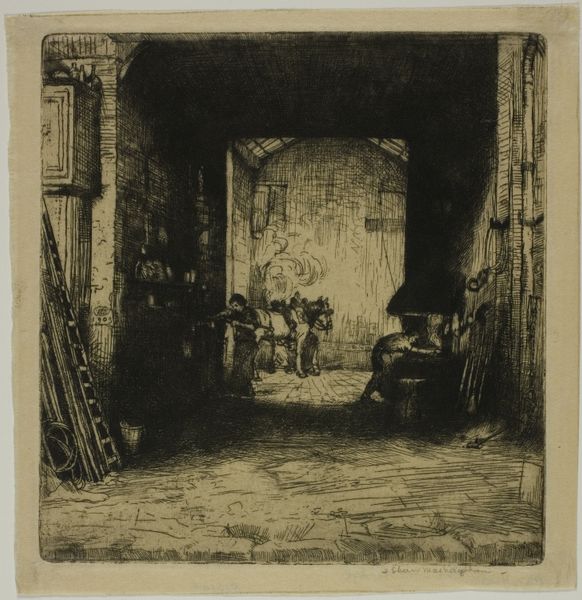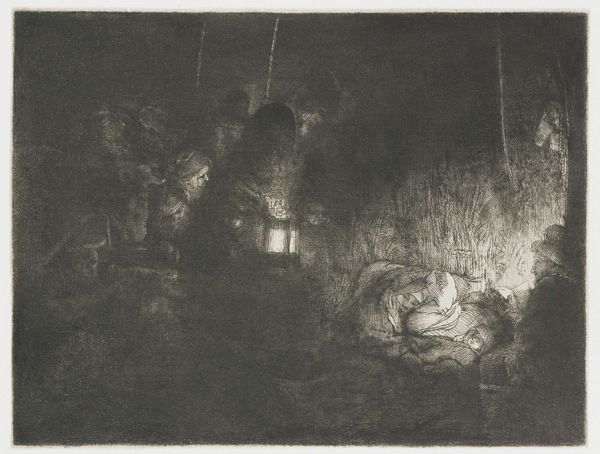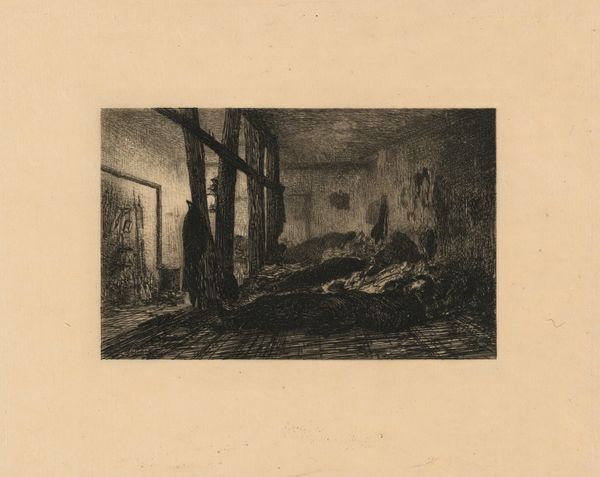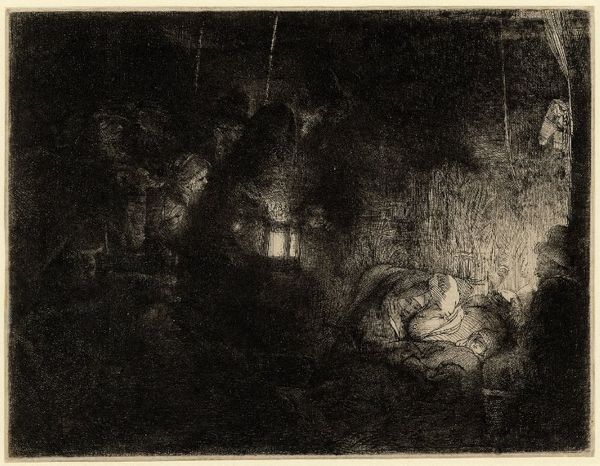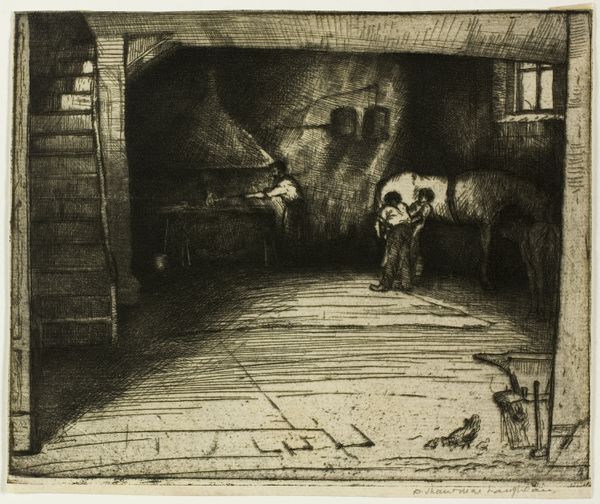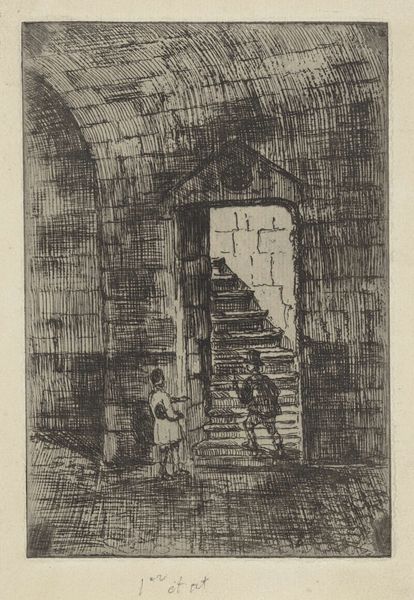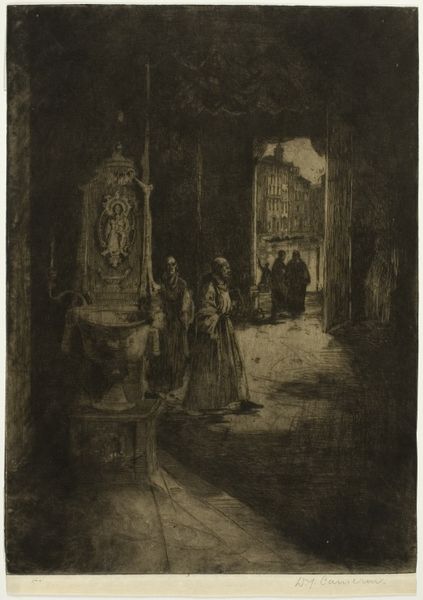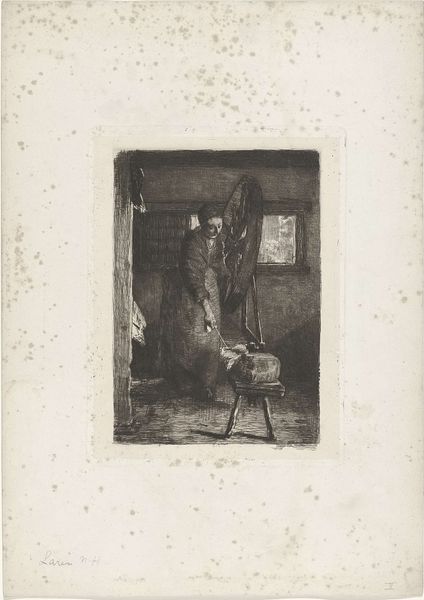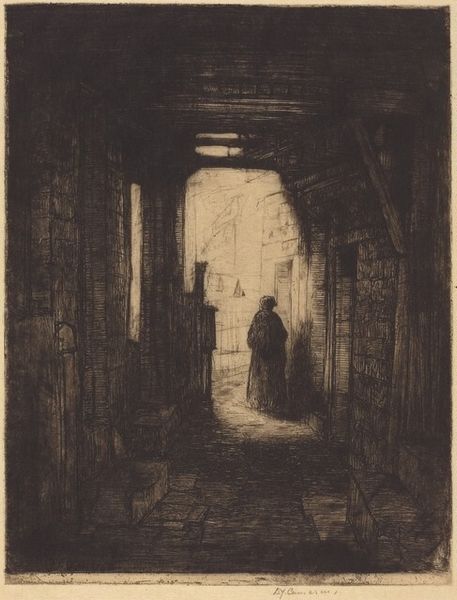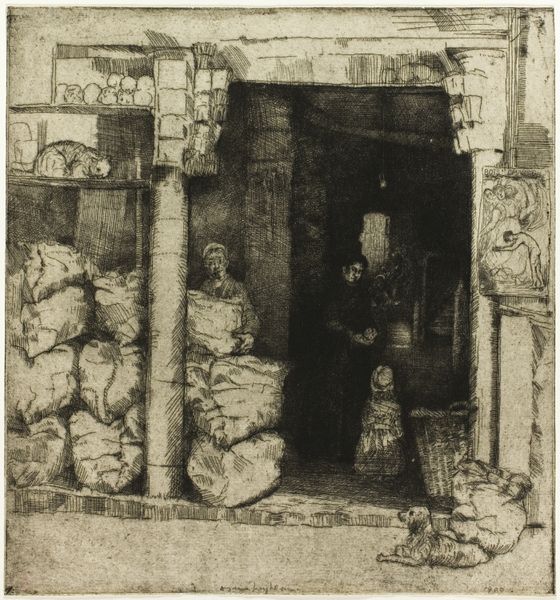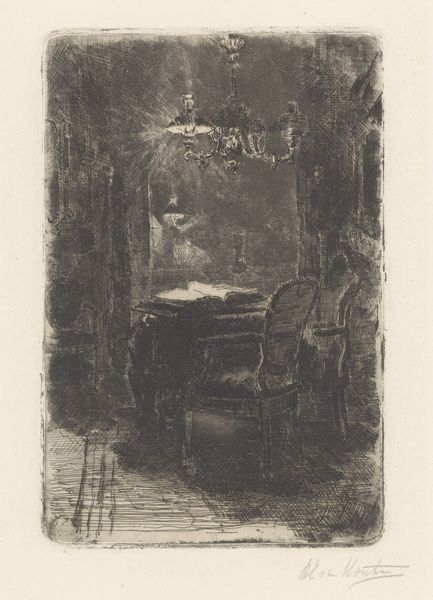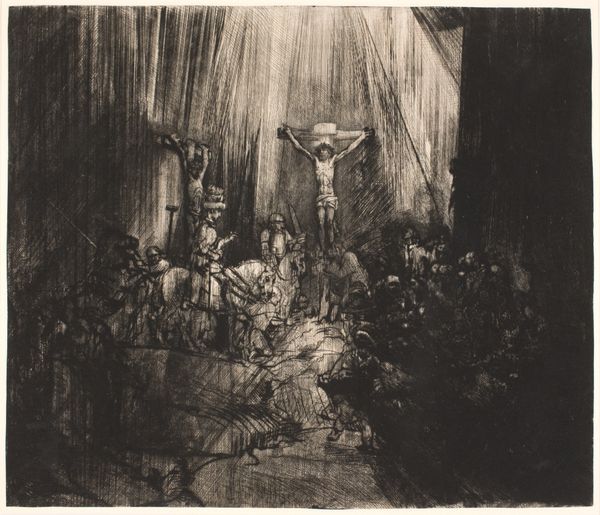
drawing, print, etching, paper, ink
#
drawing
#
ink painting
# print
#
etching
#
paper
#
ink
#
genre-painting
#
realism
Dimensions: 150 × 142 mm (image/plate); 157 × 147 mm (sheet)
Copyright: Public Domain
Curator: I find myself drawn into the chiaroscuro here, this contrast of light and shadow really grabs you. What do you think of Donald Shaw MacLaughlan’s "The Little Forge," an etching done in 1903? Editor: The darkness is powerful. The visible figures and the faint sense of industrial process existing only as vague forms feels oppressive. It brings to mind issues around labor exploitation prevalent at the turn of the century. Curator: Precisely, this image comes at a time of burgeoning industrialization but looks back to the artisan's way of life, it presents such work, especially regarding class, as ennobling but physically taxing. I mean, just consider the socio-economic status and the role of labour during that era; MacLaughlan shows its underbelly with dignity. Editor: That's a compelling point. Viewing this as an idealized vision set against a backdrop of nascent industrial shifts allows one to examine not only nostalgia but its use of escapism or wish fulfillment in art. And how that kind of thinking played into keeping exploitative practices unquestioned. Curator: Well, and to play devil's advocate for a moment, I also find a very real aesthetic appreciation here—in a traditional way! Think about his use of line and the atmospheric effects he gets in the gloom; he's got mastery of this medium in the same vein as, say, Rembrandt's more downtrodden prints. The medium is not separate from the political statement! Editor: Certainly. But, given our era's perspective, especially around themes of economic inequity and fair representation in art, we need to scrutinize just how this kind of depiction intersects—or fails to intersect—with lived realities and progressive sociopolitical engagement, so... not that this doesn’t have worth for consideration today. Curator: True enough, those darker, murky spaces could signify things that are less than clear in terms of class dynamics then. Thinking through labor conditions, perhaps MacLaughlan wanted to hint at the need for labor protection. Thank you. Editor: Indeed. Hopefully this encourages our audience to view images like these critically as we assess how far labor movements and social progress have brought us and how far we have to go.
Comments
No comments
Be the first to comment and join the conversation on the ultimate creative platform.
